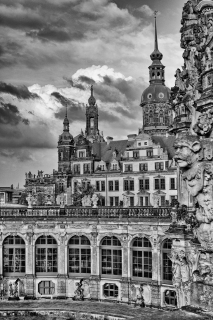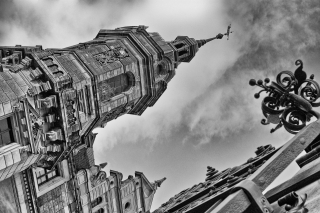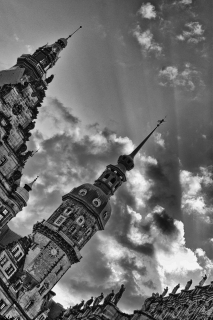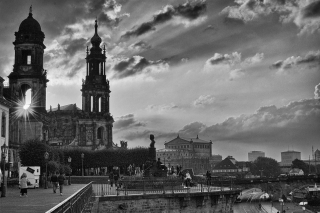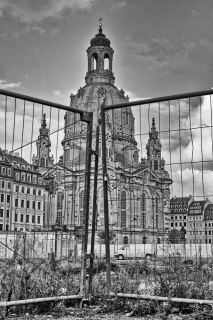Dresden’s reconstruction determines its character as a city: Burnt down during a bomb raid in WWII, Dresden was partly left in ruins by former East Germany to become a symbol of German’s reunification when the city’s architectural gems were rebuilt anew. The old city of Dresden is now an astonishing place with places like its Theater Square that is surrounded by the renaissance palace, the baroque Hofkirche (court church), the baroque Zwinger (bailey), the classicist Schinkelwache (guard-house), and the historist Semperoper (opera house). Walking over the square, it feels real and old, but there was nothing but ruins up until 1989 when the two Germanies reunited.
The reconstruction is deceptively well done such that nothing reveals that these buildings are 25 years old imitations. Knowing that these buildings only pretend, I started to search for the tell tales that reflect these building’s provenance, but there was nothing obvious; the architecture appeared to be freshly renovated but not faked. On the other hand, while walking through the old city center, the place was missing a certain overgrown naturalness, a patina, the subtle balance of shops, living quarters, restaurants, bars, and cafes that mark an old, historically evolved city. The grand layout of the city has been reconstructed and felt natural but the details therein were artificial. Neighbors have not been neighbors for a life-time but were co-located by coincidence. The city is the result of 25 years of development, of individual decisions and opportunities that did not yet become interwoven to form an urban space with all its interlinked dependencies. The city fabric is coincidental and not contingent.
Dresden attempts to heal the scars of war and communism. Although prosperous and successful as a city, the attempt to reconstruct the city as it had been seems to be bound to failure as long as it does not accept the immediate past but instead refers to a mediate past. This mediate past perfect implicitly refers to an unspoken past which becomes thereby inaccessible such that its perception cannot evolve and change. If the past’s perception remains fixed, it threatens to over-determine the arising future. Only the blazing walls of the Frauenkirche embed the black stones preserved from the original ruin, and in doing so solemnly exemplify a visible integration of the immediate past into the current present.
A short walk of 15 minutes leads from the old city center to the surrounding communist buildings which are in stark contrast to the ornateness of the historic reconstruction. There seems to be no mediation between the distanced and reconstructed past and the close and directly remembered past. This divide is reflected in society, for example in people who use English terms whenever possible, replacing in a normal German phrase “kreative” with “creative” or substituting English color names for German ones in ordinary German phrases. On the other hand, the museum guides are mostly fluent in Russian and have a hard time accepting my habit of turning around at the end of an exhibit to walk back, since such a behavior is not in line with what they conceive as correct walking direction: Nothing could be more of a communist cliché than such a total obedience to prescribed rules! This gap is generational and will disappear over time, but the city might conserve its past as long as the city suppresses it.
In any case, I was only visiting briefly without much time to see city and people. During a walk I took a couple of shots of the new old center which is — reconstruction or not — quite a beautiful spot.
